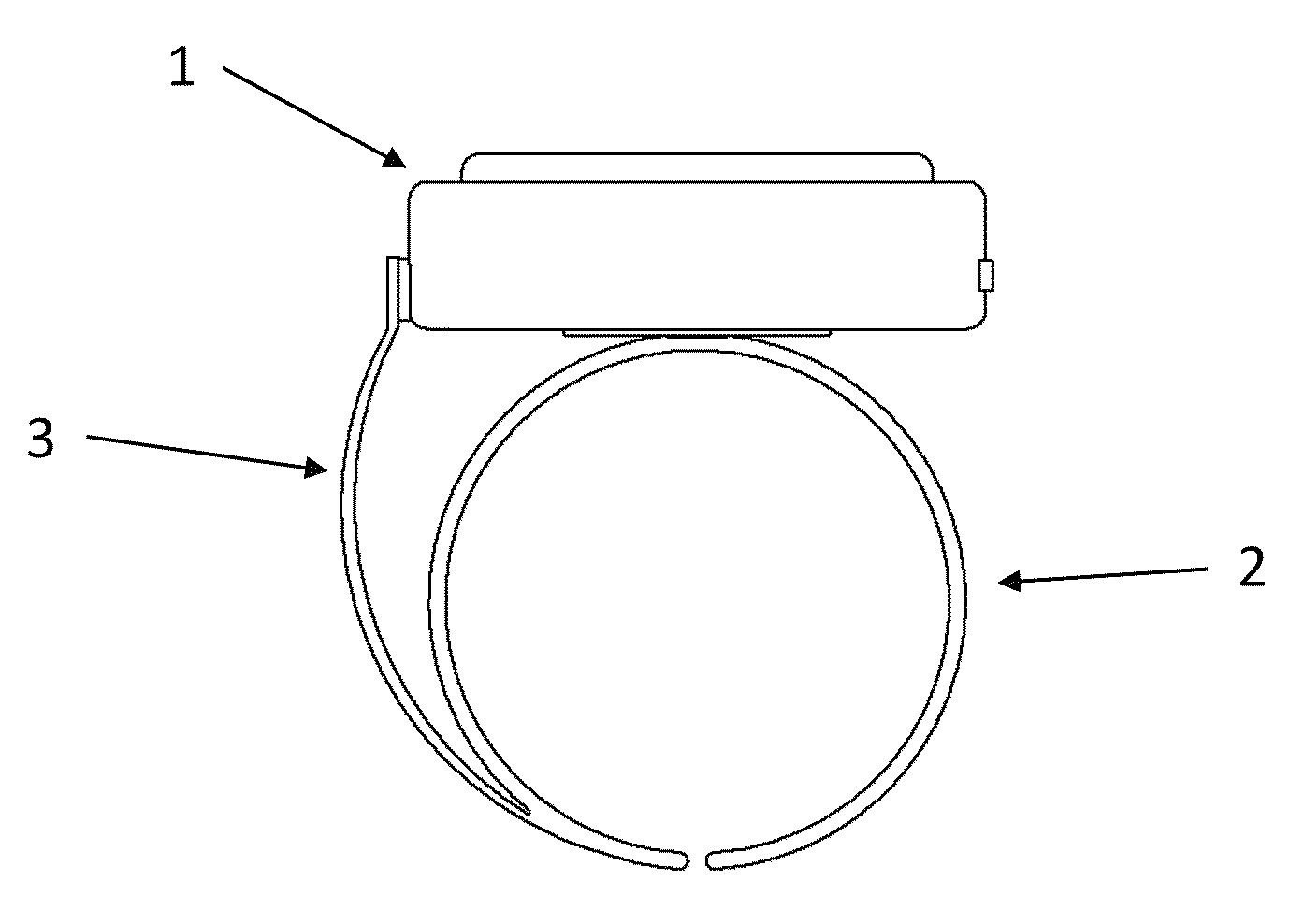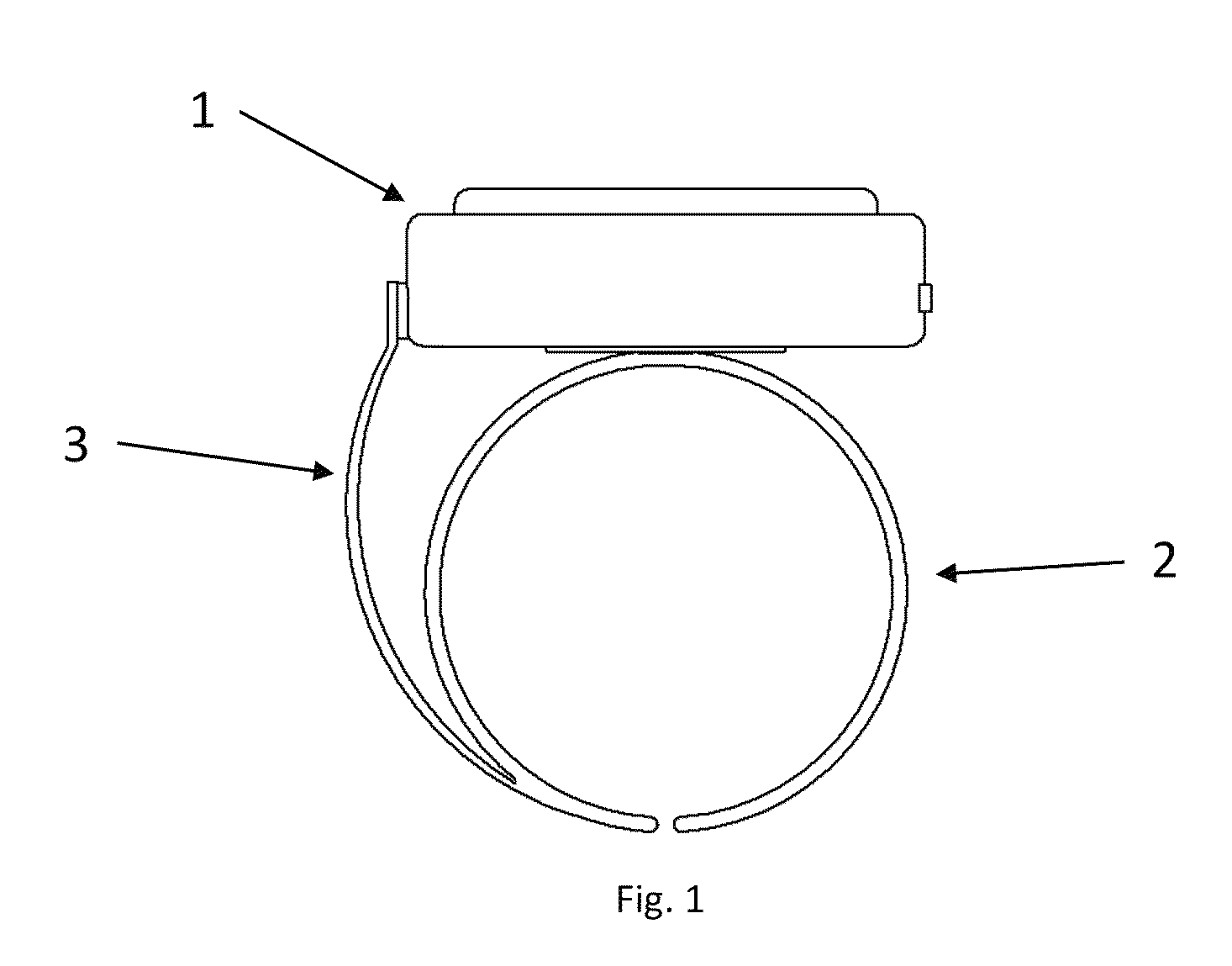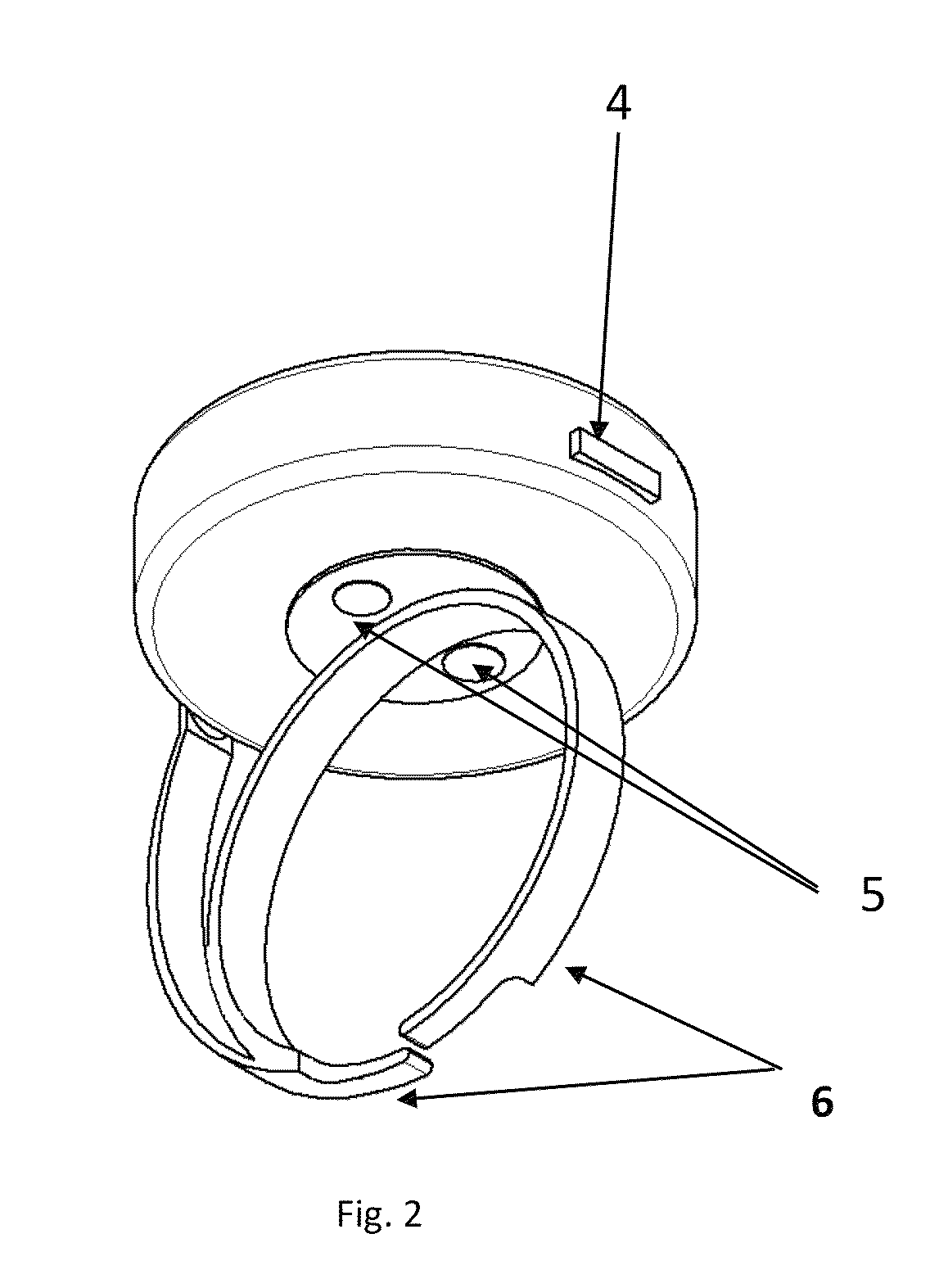Alarm device to prevent drowsiness in drivers
a technology for alarm devices and drivers, applied in alarms, instruments, etc., can solve the problems of driver drowsiness, most common and dangerous, and fatal accident to one or more people, and achieve the effect of convenient opening
- Summary
- Abstract
- Description
- Claims
- Application Information
AI Technical Summary
Benefits of technology
Problems solved by technology
Method used
Image
Examples
Embodiment Construction
[0026]FIG. 1 shows a schematic presentation of the device which comprises a housing 1 containing an alarm system therein, which is depicted in FIG. 4. FIG. 1 also shows a ring 2 with a lever 3 adjacent thereto. When a driver fits the ring on one of his fingers and closes his hand to grab the steering wheel of the vehicle, the lever 3 shown in FIG. 1 will cease exerting pressure on the knob or button 7 represented in FIG. 3. Such lack of pressure exerted by the closing of the grip causes the knob or button not to contact the batteries 14 and 16 in FIG. 4, therefore it will not actuate the buzzer 15 and the vibrator 9 both shown in FIG. 4. When a driver enters into a sleep micro-event or is in a drowsiness state, his limbs (including the fingers) will start loosening, thus ceasing to exert pressure by his grip and fingers, which in turn will cause the enlargement of the ring circumference, which upper end will then exert pressure on the knob or button, such pressure will therefore act...
PUM
 Login to View More
Login to View More Abstract
Description
Claims
Application Information
 Login to View More
Login to View More - R&D
- Intellectual Property
- Life Sciences
- Materials
- Tech Scout
- Unparalleled Data Quality
- Higher Quality Content
- 60% Fewer Hallucinations
Browse by: Latest US Patents, China's latest patents, Technical Efficacy Thesaurus, Application Domain, Technology Topic, Popular Technical Reports.
© 2025 PatSnap. All rights reserved.Legal|Privacy policy|Modern Slavery Act Transparency Statement|Sitemap|About US| Contact US: help@patsnap.com



